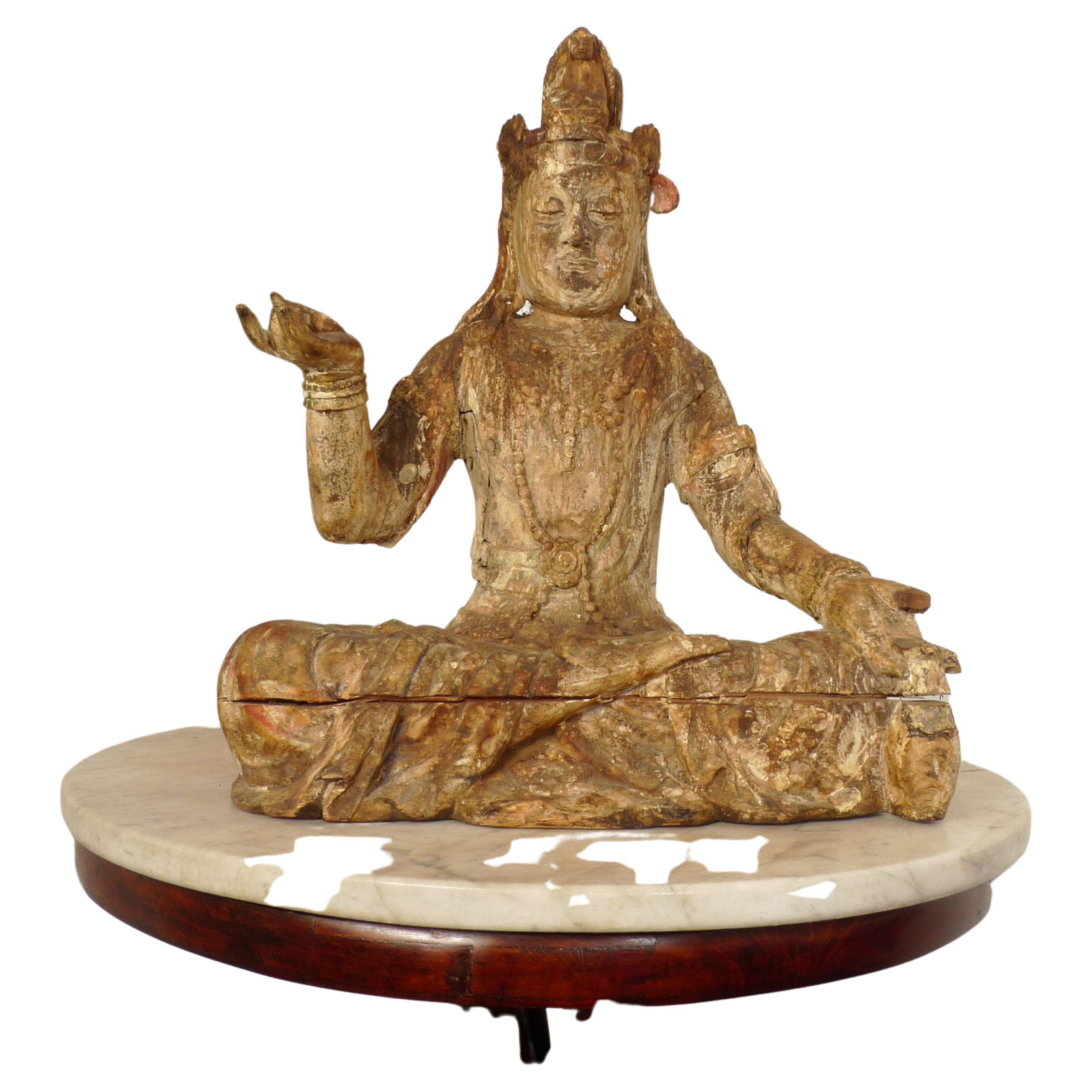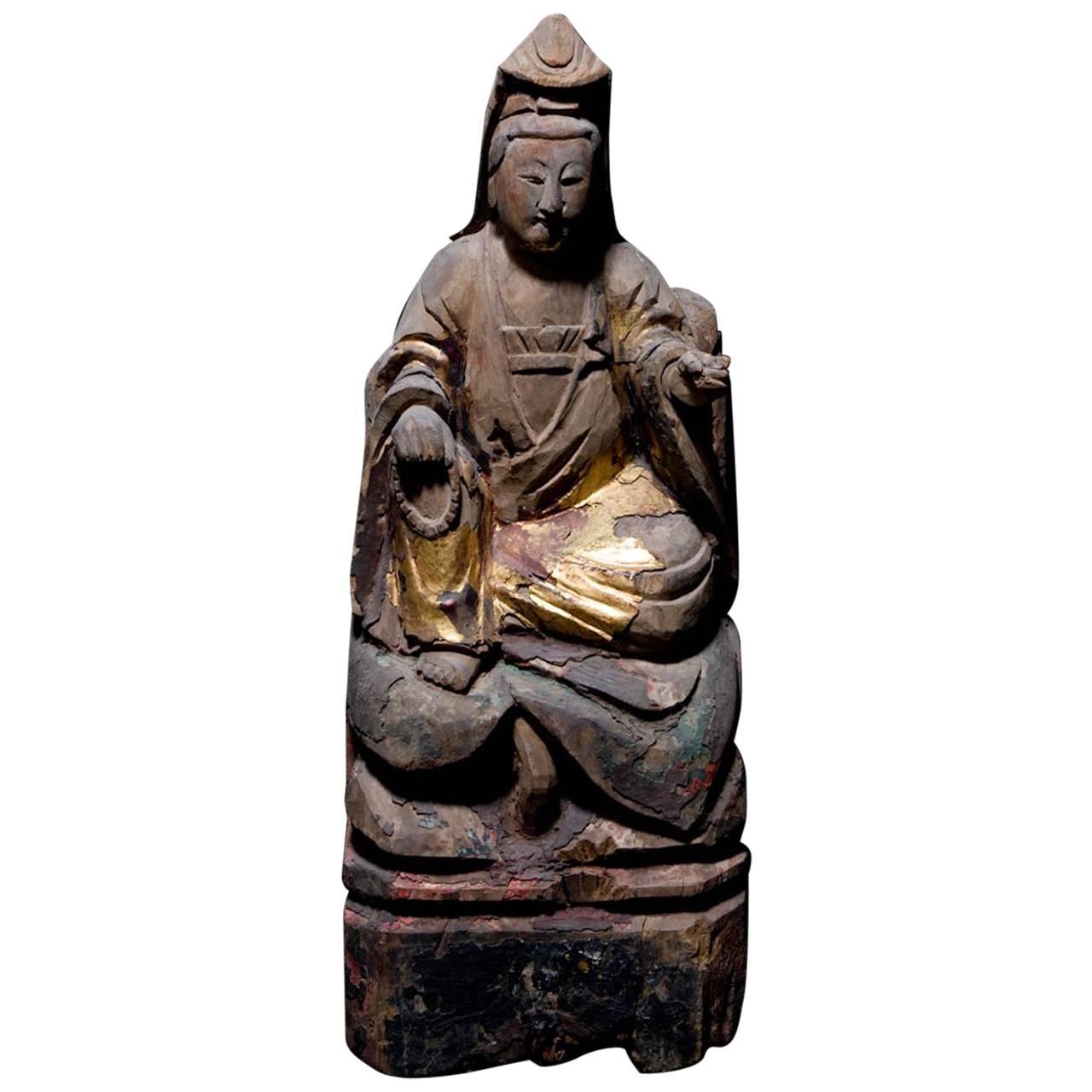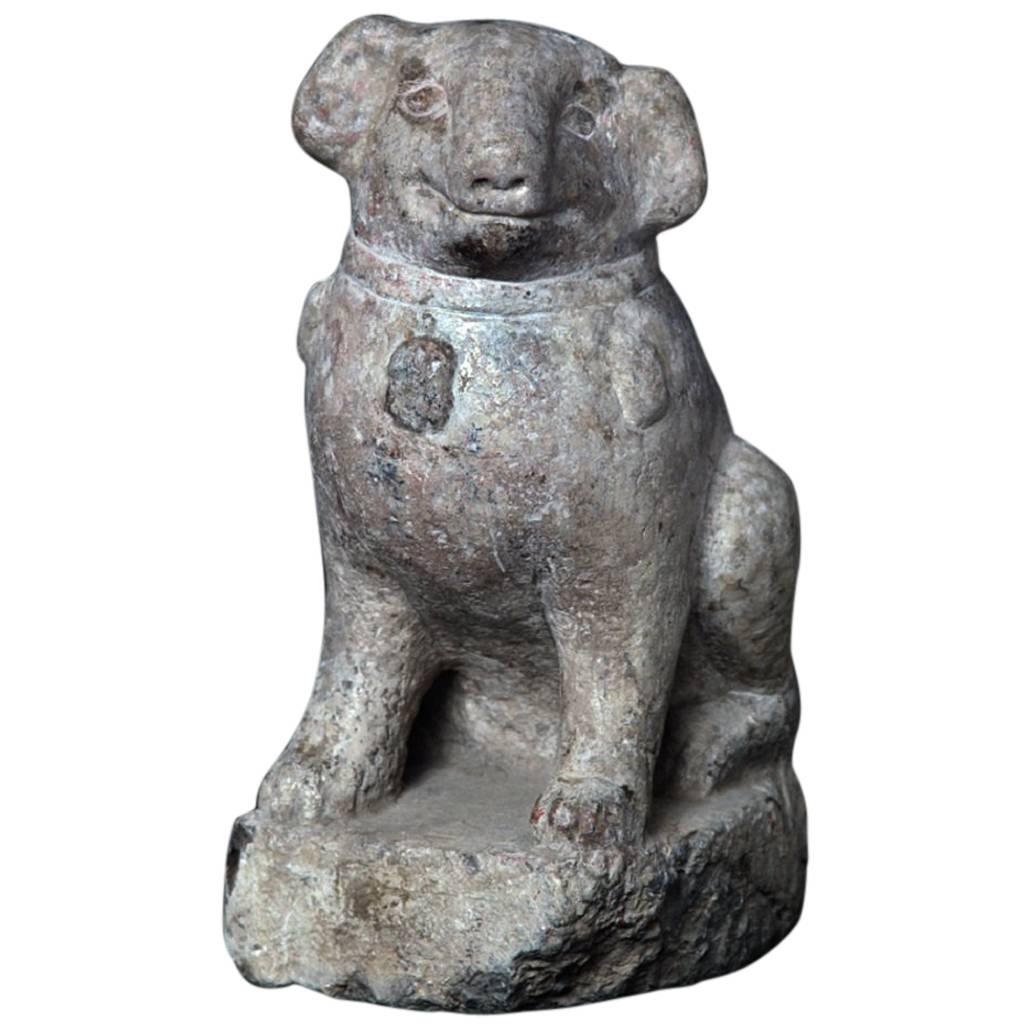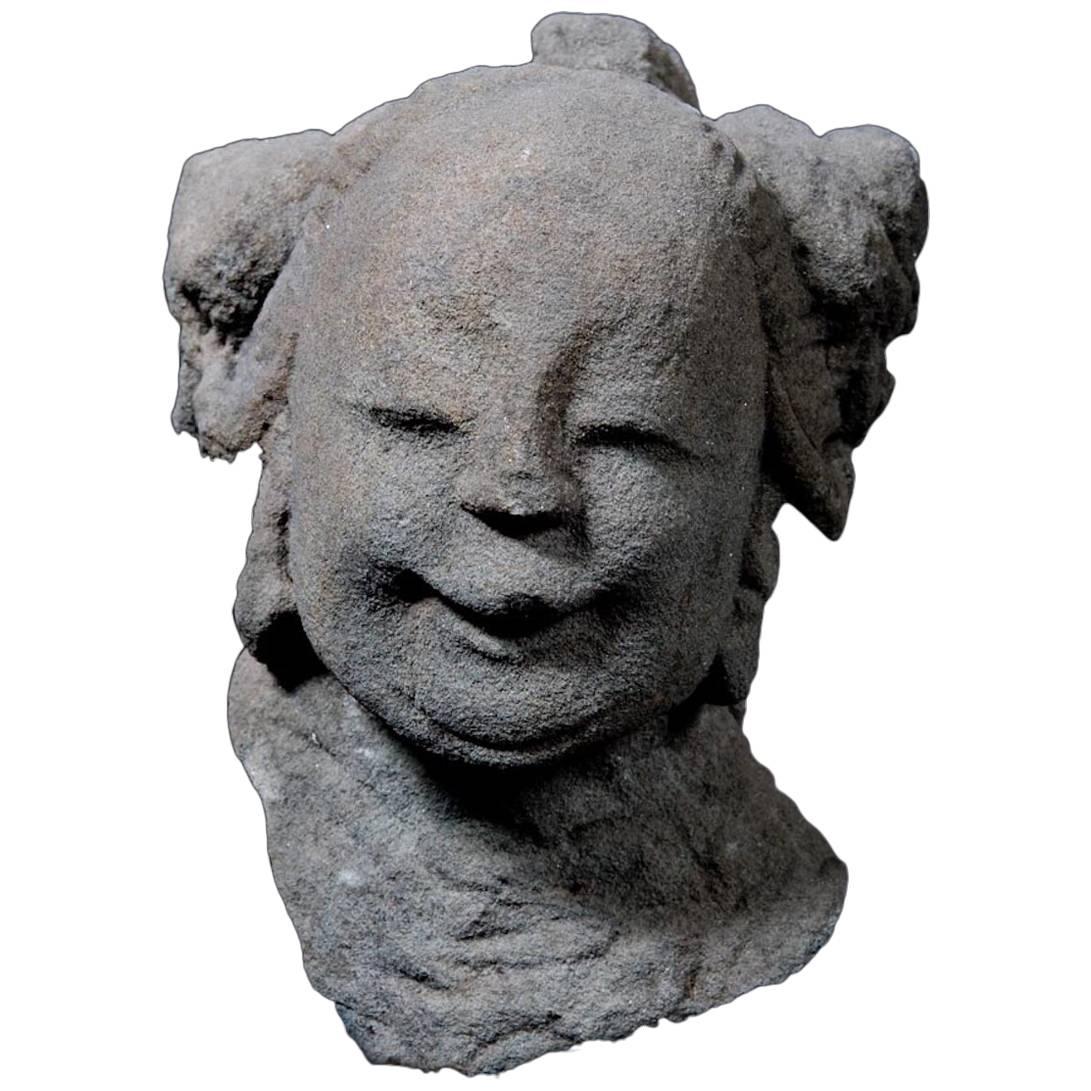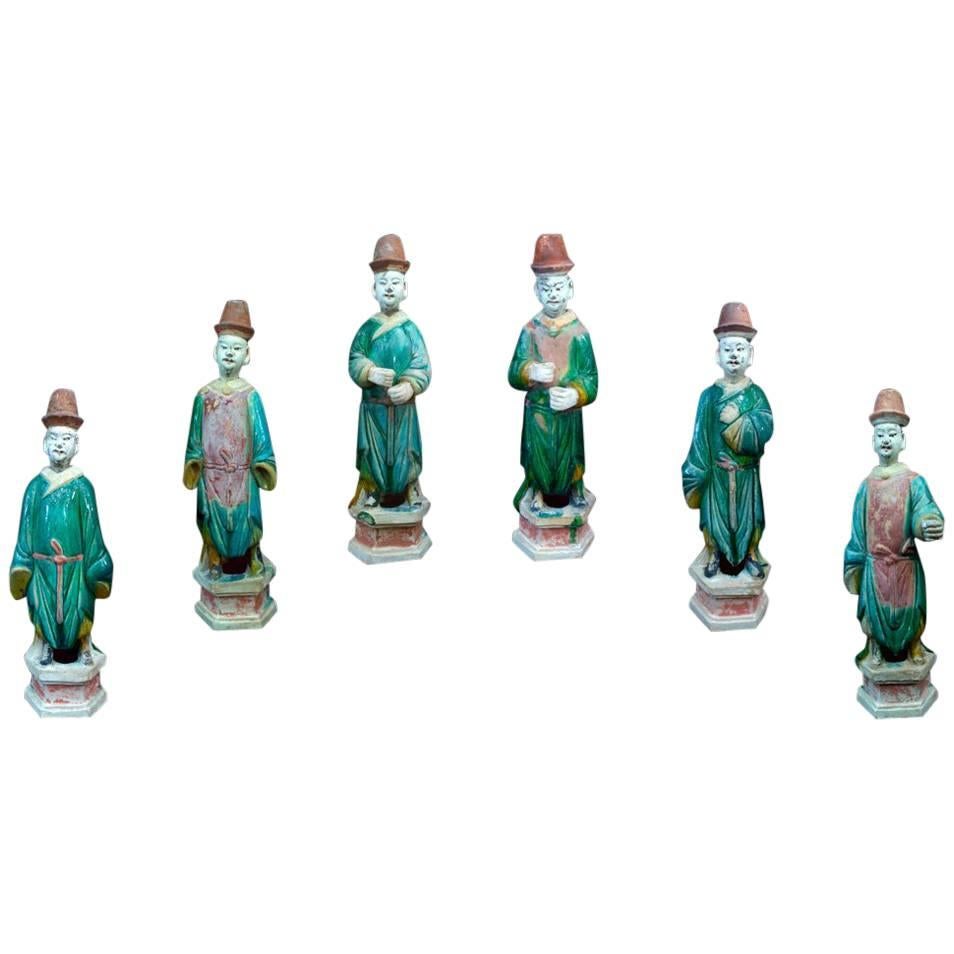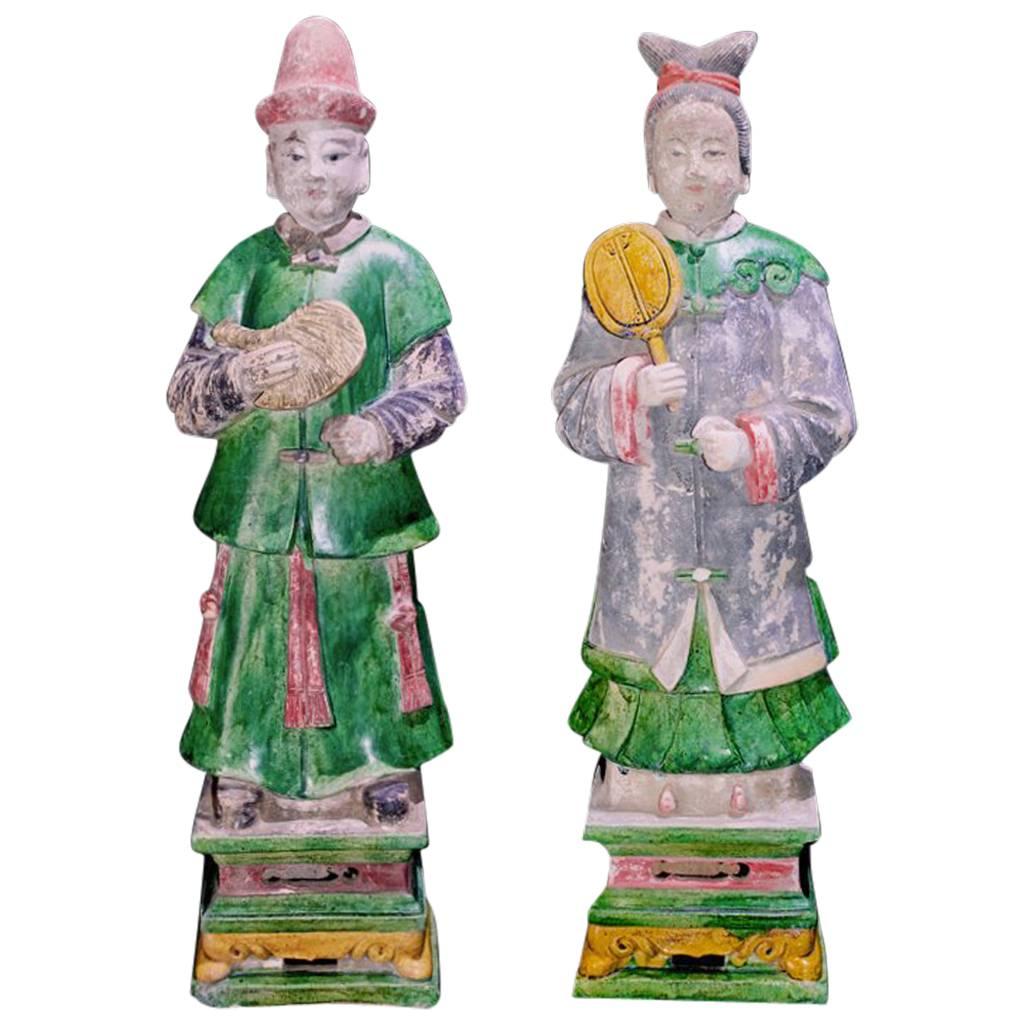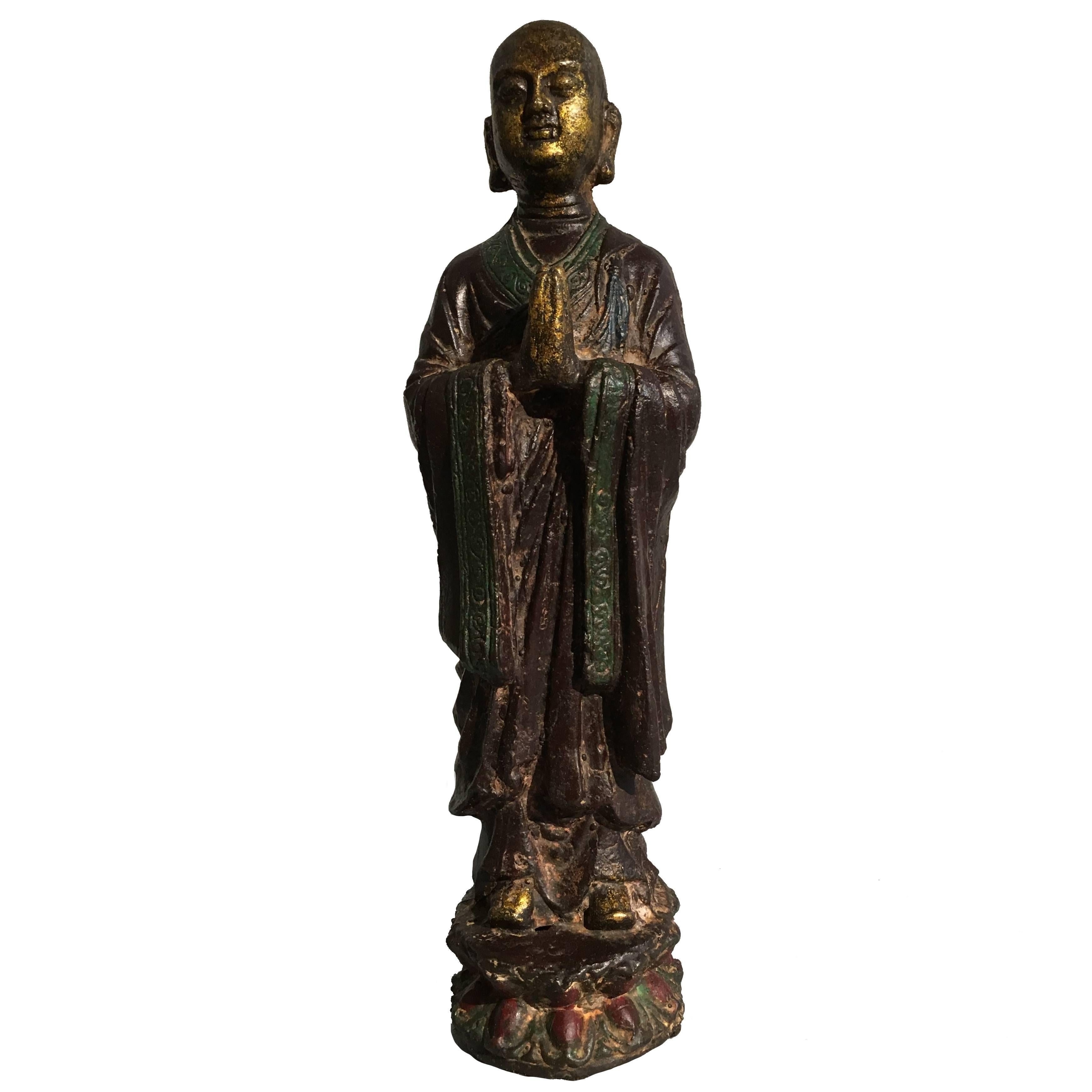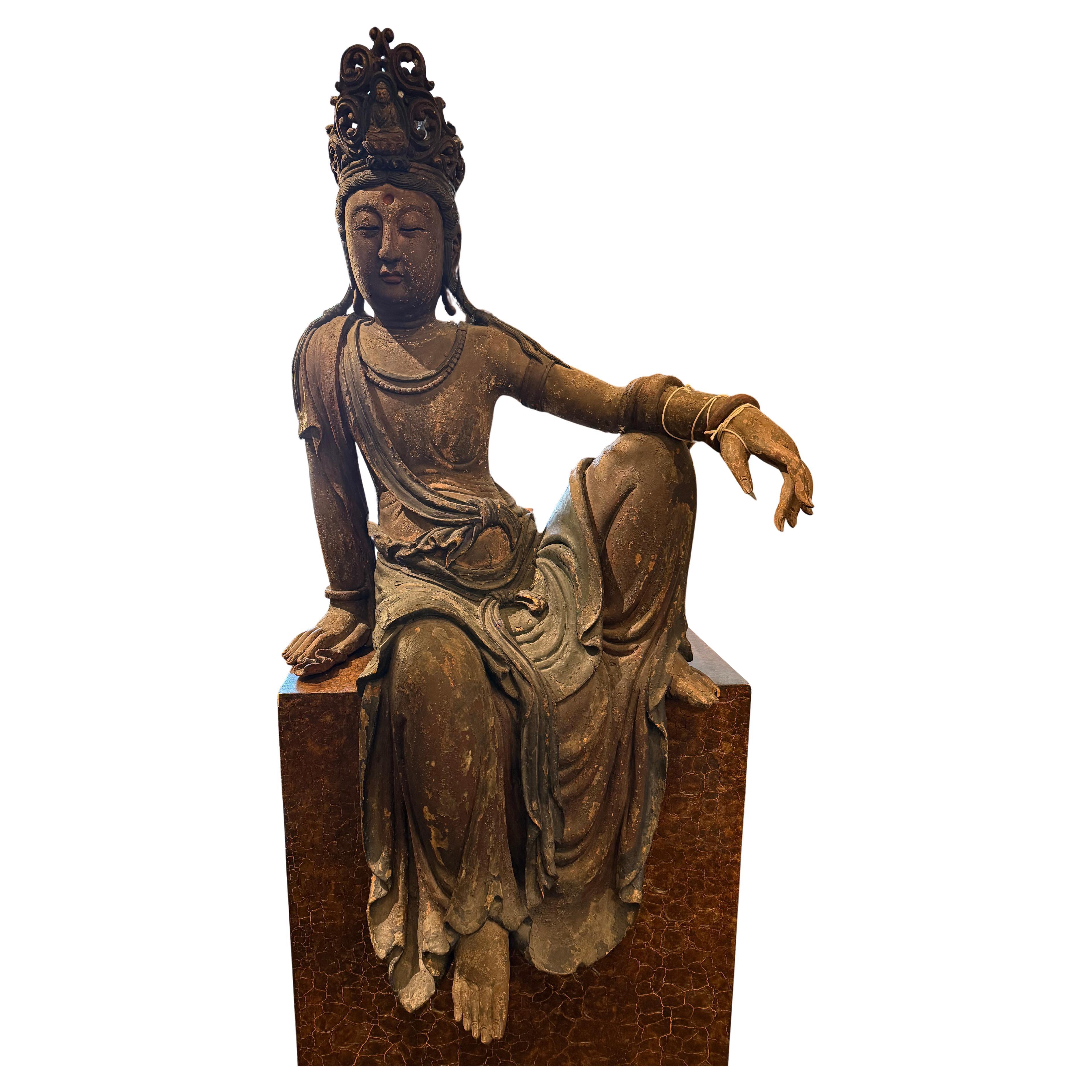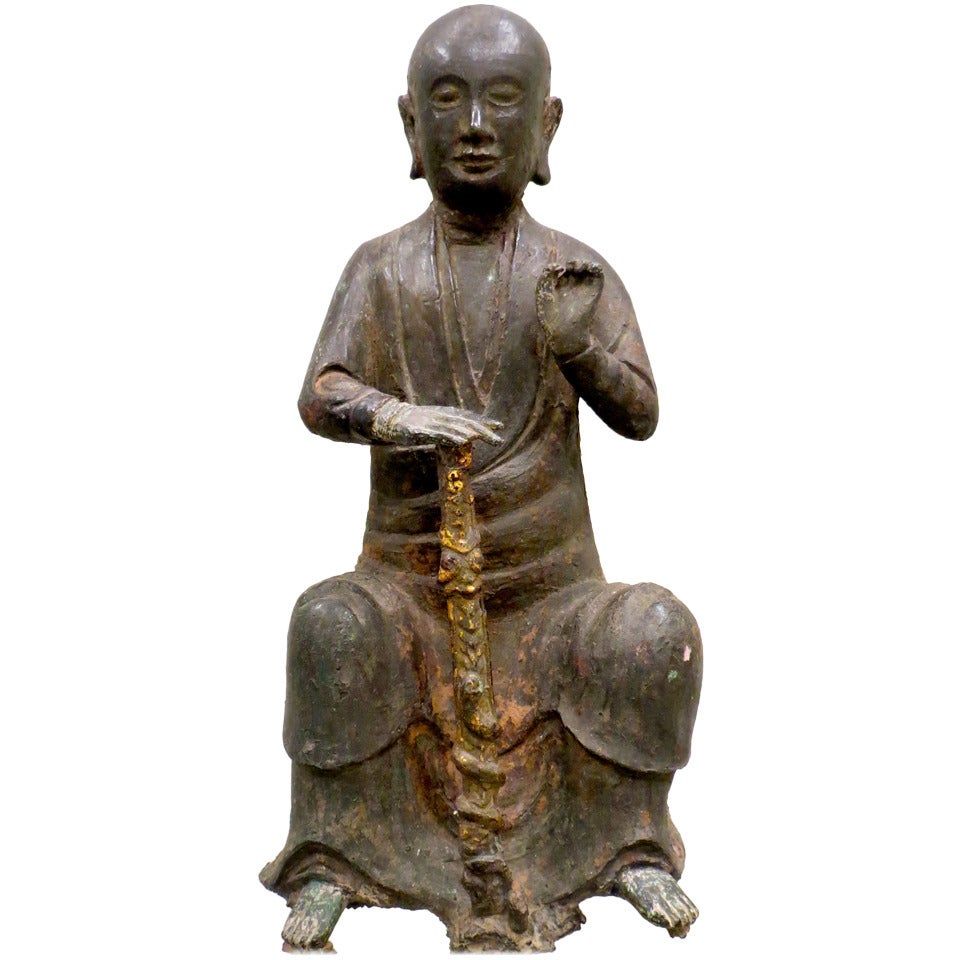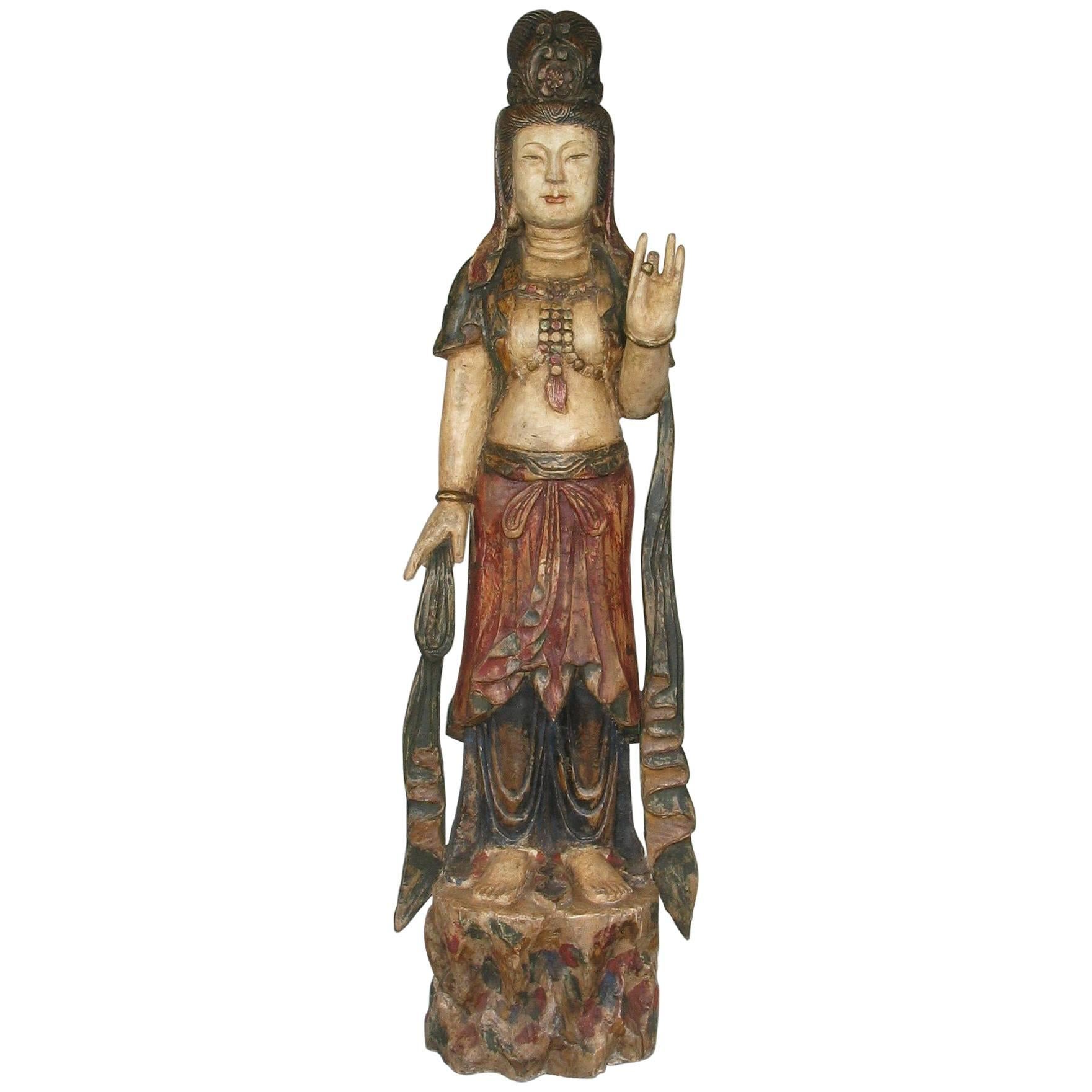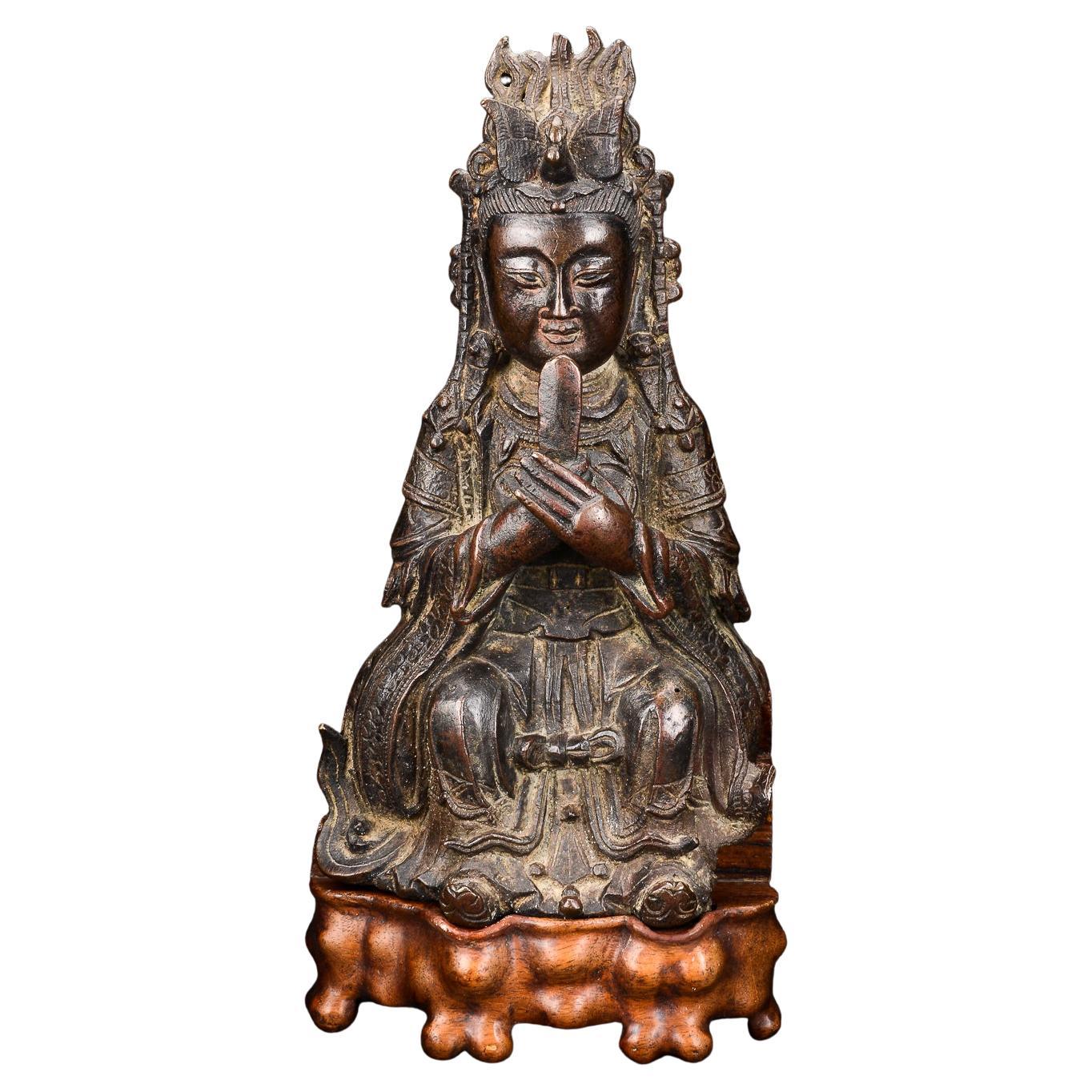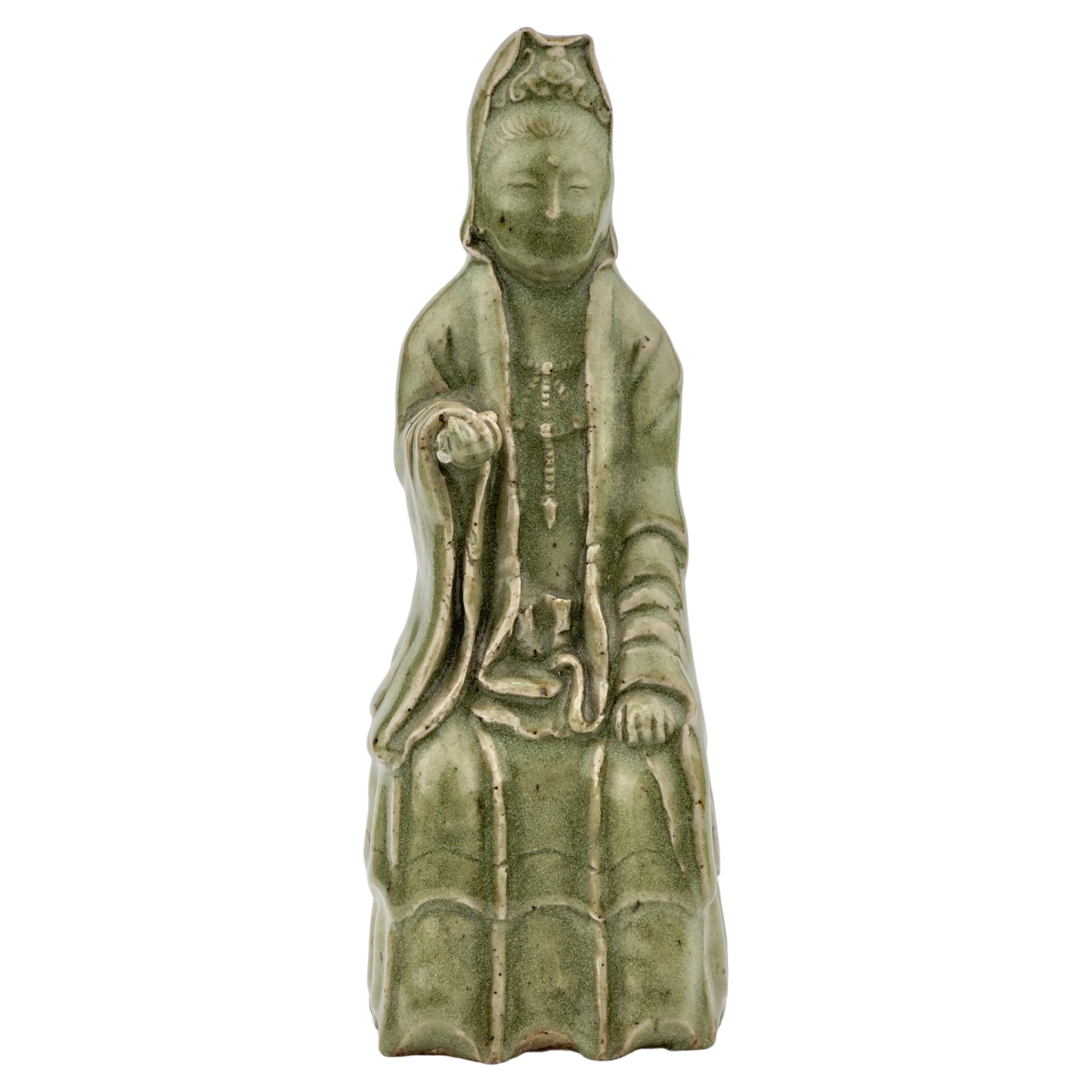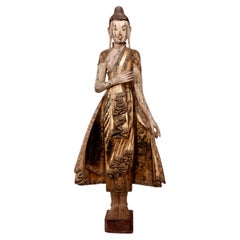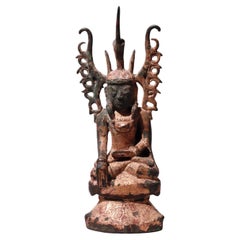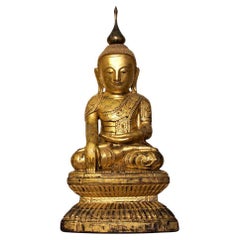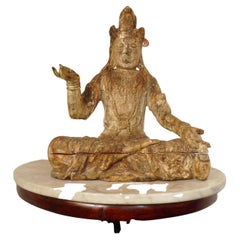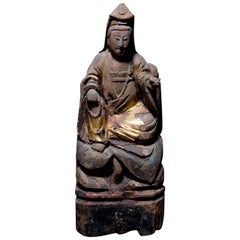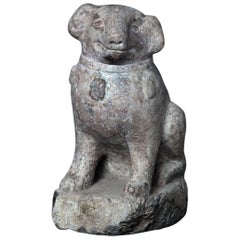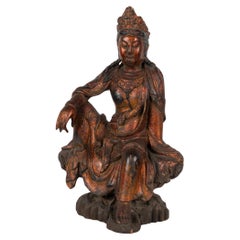
Gilt Lacquered Wood Figure of Guanyin, Ming Dynasty (1368-1644)
View Similar Items
Want more images or videos?
Request additional images or videos from the seller
1 of 21
Gilt Lacquered Wood Figure of Guanyin, Ming Dynasty (1368-1644)
Price:$4,429.41
$5,000List Price
About the Item
- Dimensions:Height: 25.75 in (65.41 cm)Width: 15.75 in (40.01 cm)Depth: 11.25 in (28.58 cm)
- Style:Ming (Of the Period)
- Materials and Techniques:
- Place of Origin:
- Period:
- Date of Manufacture:Ming Dynasty (1368-1644)
- Condition:Wear consistent with age and use.
- Seller Location:Point Richmond, CA
- Reference Number:Seller: TM-UH900851stDibs: LU1778237422732
About the Seller
5.0
Platinum Seller
Premium sellers with a 4.7+ rating and 24-hour response times
Established in 1999
1stDibs seller since 2015
687 sales on 1stDibs
Typical response time: 2 hours
Authenticity Guarantee
In the unlikely event there’s an issue with an item’s authenticity, contact us within 1 year for a full refund. DetailsMoney-Back Guarantee
If your item is not as described, is damaged in transit, or does not arrive, contact us within 7 days for a full refund. Details24-Hour Cancellation
You have a 24-hour grace period in which to reconsider your purchase, with no questions asked.Vetted Professional Sellers
Our world-class sellers must adhere to strict standards for service and quality, maintaining the integrity of our listings.Price-Match Guarantee
If you find that a seller listed the same item for a lower price elsewhere, we’ll match it.Trusted Global Delivery
Our best-in-class carrier network provides specialized shipping options worldwide, including custom delivery.More From This Seller
View AllThai Gilt Bronze Figure of a Seated Buddha
Located in Point Richmond, CA
Thai Gilt Bronze Figure of a Seated Buddha, depicted with legs crossed in the virasana position with the right leg resting on the left leg, soles up, the hands in the earth touching ...
Category
Antique Late 19th Century Thai Other Sculptures and Carvings
Materials
Bronze, Gold Leaf
Burmese Mandalay carved wood figure of the standing Buddha
Located in Point Richmond, CA
Burmese Mandalay carved wood figure of the standing Buddha on a square base, the left hand is in the varada or boon-granting mudra the right held up towards the chest, costumed in ed...
Category
Early 20th Century Burmese Other Sculptures and Carvings
Materials
Hardwood
Arakanese Gilt Lacquered Bronze Mahakyain phara (Royal Oath) Buddha Image
Located in Point Richmond, CA
Arakanese Gilt Lacquered Bronze Mahakyain phara (Royal Oath) Buddha Image, a seated figure depicted in the bhumisparsa (earth touching) mudra, with small “fruit” in left hand, a maje...
Category
Antique 17th Century Burmese Other Sculptures and Carvings
Materials
Bronze, Gold Leaf
Antique Burmese Shan Wood, Lacquer and Gold Leafed Buddha, 19th Century
Located in Point Richmond, CA
Antique Burmese Shan Wood, Lacquer and Gold Leafed Buddha, 19th Century. The image sits on a waisted lotus base with raised lacquer details, seated in padmasana, the lotus position ...
Category
Antique 19th Century Burmese Other Sculptures and Carvings
Materials
Gold Leaf
Antique Burmese Carved Wood Panel of a Court Scribe.
Located in Point Richmond, CA
Antique Burmese Carved Wood Panel of a Court Scribe. The standing heavenly being holds a manuscript with a brush in the right hand writing scriptur...
Category
Antique Late 19th Century Burmese Folk Art Sculptures and Carvings
Materials
Wood, Lacquer
Burmese Dry Lacquer Buddha Head
Located in Point Richmond, CA
Burmese Dry Lacquer Head from a seated Buddha image, Shan States. The black lacquer head with enigmatic smiling expression, downcast eyes, over arching eyebrows, yellow glass inset h...
Category
Vintage 1920s Burmese Other Sculptures and Carvings
Materials
Lacquer
You May Also Like
A large wood Buddha/Guanyin with traces of pigments Ming Dynasty (1368-1644)
By Master
Located in Vienna, AT
A LARGE WOOD FIGURE OF GUANYIN WITH TRACES OF PIGMENTS
MING DYNASTY (1368-1644)
The bodhisattva is shown seated in padmasana, wearing long flowing ro...
Category
Antique Mid-17th Century Chinese Ming Sculptures and Carvings
Materials
Hardwood
Lady Guanyin Bodhisattva Gilded Wood Carving - Ming Dynasty, China 1368-1644 AD
Located in San Pedro Garza Garcia, Nuevo Leon
Magnificent Lady Guanyin Bodhisattva seated in Royal Relaxation pose hand-carved in Gilded Wood with traces of paint still visible.
This expressi...
Category
Antique 15th Century and Earlier Chinese Ming Antiquities
Materials
Wood
Important Ancient Chinese Effigy Pug Dog, Ming Dynasty 1368-1644
Located in South Burlington, VT
China, a carving of a canine “Pug”, Ming Dynasty, 1368-1644 CE
Dimensions: 38 cm, 15” High
Photographs taken indoors and out of doors for your viewing pleasure.
The hand carved limestone beast shown on its haunches with naturalistic joyful expression and a well defined compact head, ears, noes, eyes, feet, and tail parted to one side on reverse with distinctive collar ornament seated four square on a thick base all-over showing a weathered surface from significant age.
Formerly exhibited “Asia Week” New York City, Fuller Building, Hutton Gallery 2006.
Provenance: ex collection luoyang, Henan Province, China.
Includes custom display base as shown
Catalog reference: 35 years collecting 35 treasures, Number 35, p.76 (photo)
In ancient China, it is a well-known fact that several types of small dogs were bred and were favored pet gifts between emperors and kings including Lion Dogs, Pekingese and Lo-sze breeds. Some Lo-sze are pictured wearing collars with bells a frequent combination fancied by European royalty of the seventeenth and eighteenth centuries. Lo-sze or pugs were prized for their compact body, good bones, flat face, square jaw, short coat, curled tail, side set back ears, and temperate disposition.
History:
Placing stone animals in important tombs can be traced back at least to the Qin Dynasty (221-206 BCE), some two thousand years ago. In ancient times, stone animals and human figures placed before imperial tombs symbolized royal power and privilege in addition to decorative functions.
The first Ming tomb...
Category
Antique 15th Century and Earlier Chinese Ming Sculptures and Carvings
Materials
Limestone
$6,800 Sale Price
20% Off
Ming Dynasty Celestial Deity Head Carved in Stone - China '1368-1644 AD'
Located in San Pedro Garza Garcia, Nuevo Leon
Wonderful celestial deity head with a jovial expression in stone with a finely engraved cap. It is mounted on a custom lucite base.
This piece is accompanied by a Certificate of Authenticity, and Certificate of Expertise by Jean-Yves Nathan - Specialist in Asian Arts for the CEDEA (The European Confederation of Art Experts).
The Ming dynasty was the ruling dynasty of China – then known as the Empire of the Great Ming...
Category
Antique 15th Century and Earlier Chinese Ming Antiquities
Materials
Stone
6 Elegant Ming Dynasty Court Attendants in Glazed Terracotta, China 1368-1644 AD
Located in San Pedro Garza Garcia, Nuevo Leon
A fine set of a six court attendants as in the Forbidden City of Beijing, elegantly dressed in a Green & Red Daopao – a traditional men’s formal attire from the Ming Dynasty dated 1368-1643 A.D. – with glazed robes and Red Pigment remains in their hat and belts. They stand in an honorary posture atop a red plinth, some with orifices in their hands, where spirit objects were placed to comfort or satisfy the deceased. The heads are detachable, as often seen on the larger figures from this period.
They are accompanied by a Certificate of Authenticity, and Certificate of Expertise by Jean-Yves Nathan - a leading authority specialized in Far East Archaeology from the CEDEA (The European Confederation of Art Experts).
Burial figurines of graceful dancers, mystical beasts, and everyday objects reveal both how people in early China approached death and how they lived. Since people viewed the afterlife as an extension of worldly life, these figurines, called mingqi, sometimes referred as “spirit utensils” or “vessels of ghosts” disclose details of routine existence and provide insights into belief systems over a thousand-year period.
The Ming dynasty was the ruling dynasty of China – then known as the Empire of the Great Ming – for 276 years (1368–1644 AD). Founded by Chu Yuan-chang, the rebel leader that was successful in removing the mongols from the throne. Chinese control was re-asserted in China and eastern Asia. Literature became more important, schools were created, and the justice system was reformed. The Ming dynasty is described by some as "one of the greatest eras of orderly government and social stability in human history,” was the last imperial dynasty in China ruled by ethnic Han Chinese.
The practice of burying ceramic objects with the deceased went into decline from the 10th to the 14th Century AD. There was a revival in placing miniature representations of glazed terracotta objects such a furniture, food offerings, horses, miniature statues...
Category
Antique 15th Century and Earlier Chinese Ming Antiquities
Materials
Terracotta
Magnificent Court Attendants in Terracotta - Ming Dynasty, China 1368-1644 AD TL
Located in San Pedro Garza Garcia, Nuevo Leon
A magnificent pair of male and female courtiers from the Ming Dynasty (1368-1644 CE) in excellent condition. They are wearing traditional Daopao robes in green and black garments wit...
Category
Antique 15th Century and Earlier Chinese Ming Antiquities
Materials
Terracotta
Recently Viewed
View AllMore Ways To Browse
Wood Guanyin
Wood Sculpture Ming Dynasty
Chinese Wood Guanyin
Guanyin Carved Wood
Chinese Carved Figure Ming
Ming Guanyin
Guanyin Head
Chinese Purse Antique
Temple Japanese Buddhist
Chinese Deity
Indian Art 18th
Chinese Dragons Sculptures
Antique Buddha Head
China Agate
Chinese Agate
Red Buddha
Red Lacquer Carving
Burma Bronze Buddha
